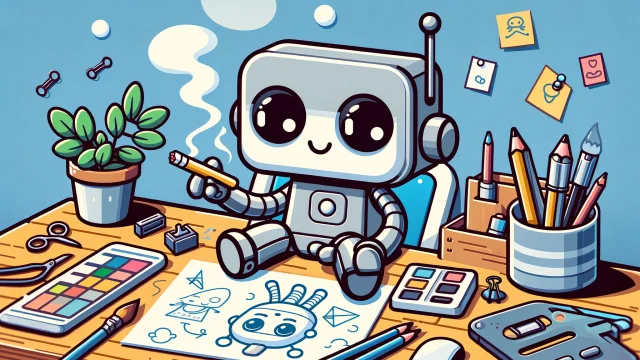Dragon Ball Release: The Timeline of a Legendary Franchise
Dragon Ball Release: The Timeline of a Legendary Franchise
The Dragon Ball franchise, created by Akira Toriyama, has been a cornerstone of anime and manga for decades. Its release timeline is a testament to its enduring popularity, from the original manga’s debut in 1984 to its numerous anime series, movies, and spin-offs. Each release brought new adventures, iconic characters, and unforgettable moments that have left a lasting impact on fans worldwide.
This article provides a detailed breakdown of the Dragon Ball release timeline, highlighting key milestones and their significance in shaping this global phenomenon.
1. The Manga: Where It All Began
1.1 The Original Dragon Ball Manga
- Release Date: November 20, 1984
- The Dragon Ball manga was serialized in Weekly Shōnen Jump, running until May 23, 1995.
- Spanning 519 chapters compiled into 42 tankōbon volumes, it introduced Goku, Bulma, and the search for the Dragon Balls.
1.2 Dragon Ball Super Manga
- Release Date: June 20, 2015 (ongoing)
- Written by Akira Toriyama and illustrated by Toyotarou, Dragon Ball Super continues the story, introducing new arcs like the Tournament of Power and the Granolah the Survivor Saga.
2. The Anime Series: A Global Phenomenon
2.1 Dragon Ball (1986–1989)
- Release Date: February 26, 1986
- Adapted the early manga chapters, focusing on Goku’s childhood adventures, training, and battles against foes like the Red Ribbon Army and King Piccolo.
2.2 Dragon Ball Z (1989–1996)
- Release Date: April 26, 1989
- Covered the latter half of the manga, emphasizing intense battles, transformations, and villains like Frieza, Cell, and Majin Buu.
2.3 Dragon Ball GT (1996–1997)
- Release Date: February 7, 1996
- An anime-exclusive sequel featuring Goku’s journey as a child, exploring new planets and enemies. Although divisive, it introduced fan-favorite concepts like Super Saiyan 4.
2.4 Dragon Ball Kai (2009–2015)
- Release Date: April 5, 2009
- A remastered version of Dragon Ball Z, featuring updated visuals, revised voice acting, and no filler episodes.
2.5 Dragon Ball Super (2015–2018)
- Release Date: July 5, 2015
- A continuation of Goku’s story, featuring arcs such as the Battle of Gods, Universe 6, and the Tournament of Power.
2.6 Dragon Ball Heroes (2018–ongoing)
- Release Date: July 1, 2018
- A promotional anime based on the Dragon Ball Heroes arcade game, showcasing fan-service-heavy battles and “what-if” scenarios.
3. Movies: Epic Tales on the Big Screen
3.1 Early Dragon Ball Movies
- First Movie Release: Dragon Ball: Curse of the Blood Rubies (December 20, 1986)
- Adaptations of early Dragon Ball storylines with added elements for cinematic appeal.
3.2 Dragon Ball Z Movies
- Spanning 13 films from Dead Zone (1989) to Wrath of the Dragon (1995), these movies introduced non-canon characters like Broly and Cooler.
3.3 Revival Movies
- Dragon Ball Z: Battle of Gods (March 30, 2013): Introduced Beerus, the God of Destruction, and marked the start of Dragon Ball Super continuity.
- Dragon Ball Z: Resurrection ‘F’ (April 18, 2015): Revived Frieza in his Golden form.
3.4 Dragon Ball Super Movies
- Dragon Ball Super: Broly (December 14, 2018): Reimagined Broly’s story and integrated him into canon.
- Dragon Ball Super: Super Hero (June 11, 2022): Focused on Gohan and Piccolo battling the Red Ribbon Army.
4. Video Games: Expanding the Universe
4.1 Early Titles
- First Release: Dragon Ball: Dragon Daihikyō (September 27, 1986) for the Super Cassette Vision.
- Early games focused on side-scrolling action and simple fighting mechanics.
4.2 Modern Gaming
- Notable releases include:
- Dragon Ball Z: Budokai series (2002–2004)
- Dragon Ball Xenoverse (2015)
- Dragon Ball FighterZ (2018), a competitive fighting game praised for its visuals and gameplay.
5. Merchandise and Global Impact
5.1 Collectibles
- From action figures to trading cards, Dragon Ball merchandise has been a staple for fans since the 1980s.
5.2 International Release Dates
- The anime debuted in the U.S. in the late 1990s, bringing Dragon Ball Z to a global audience and cementing its status as a cultural icon.
6. The Evolution of Dragon Ball Releases
6.1 Nostalgia Meets Innovation
- New releases like Dragon Ball Super cater to both long-time fans and newer audiences.
- The integration of modern storytelling and animation techniques ensures the franchise remains fresh and relevant.
6.2 Future Projects
- Fans eagerly await announcements of new anime episodes, video games, and possibly another movie following Dragon Ball Super: Super Hero.
7. Conclusion: Dragon Ball’s Timeless Legacy
The Dragon Ball release timeline showcases the franchise’s growth and its ability to adapt to changing times while staying true to its core themes of perseverance, friendship, and the pursuit of strength. From its debut in 1984 to its current global presence, Dragon Ball continues to inspire generations, proving that its journey is far from over.
Whether through manga, anime, movies, or games, the legacy of Dragon Ball lives on, reminding fans to keep reaching for their own limits—just like Goku.

